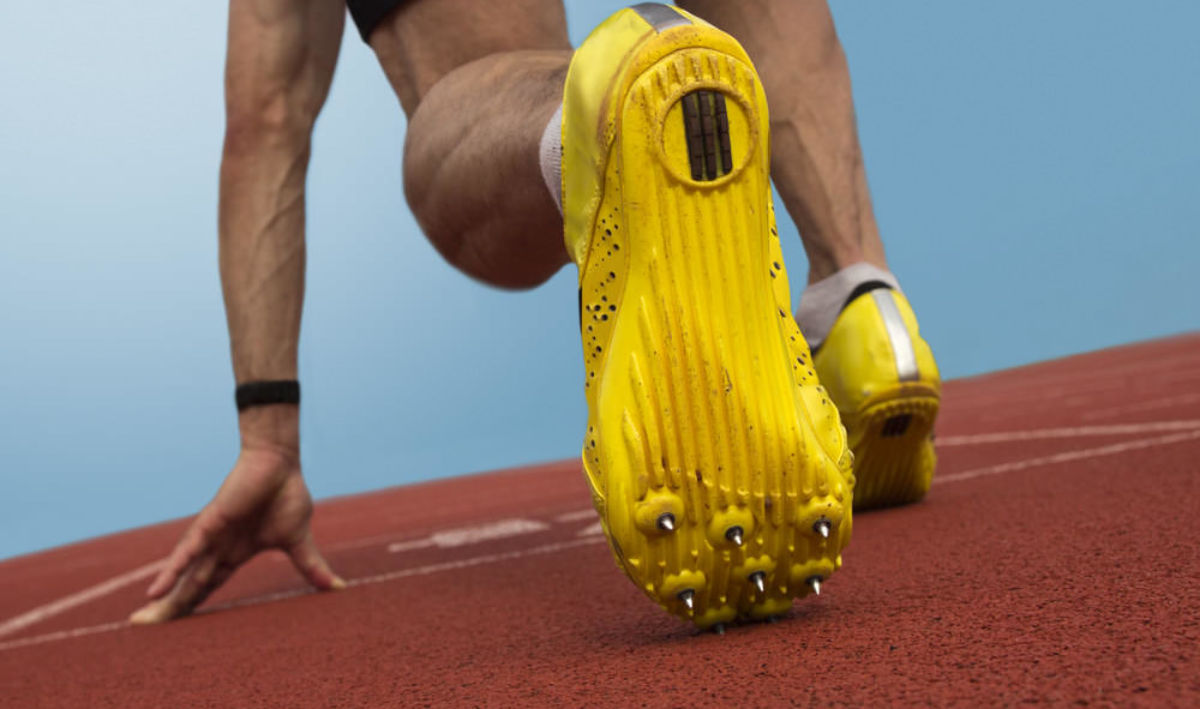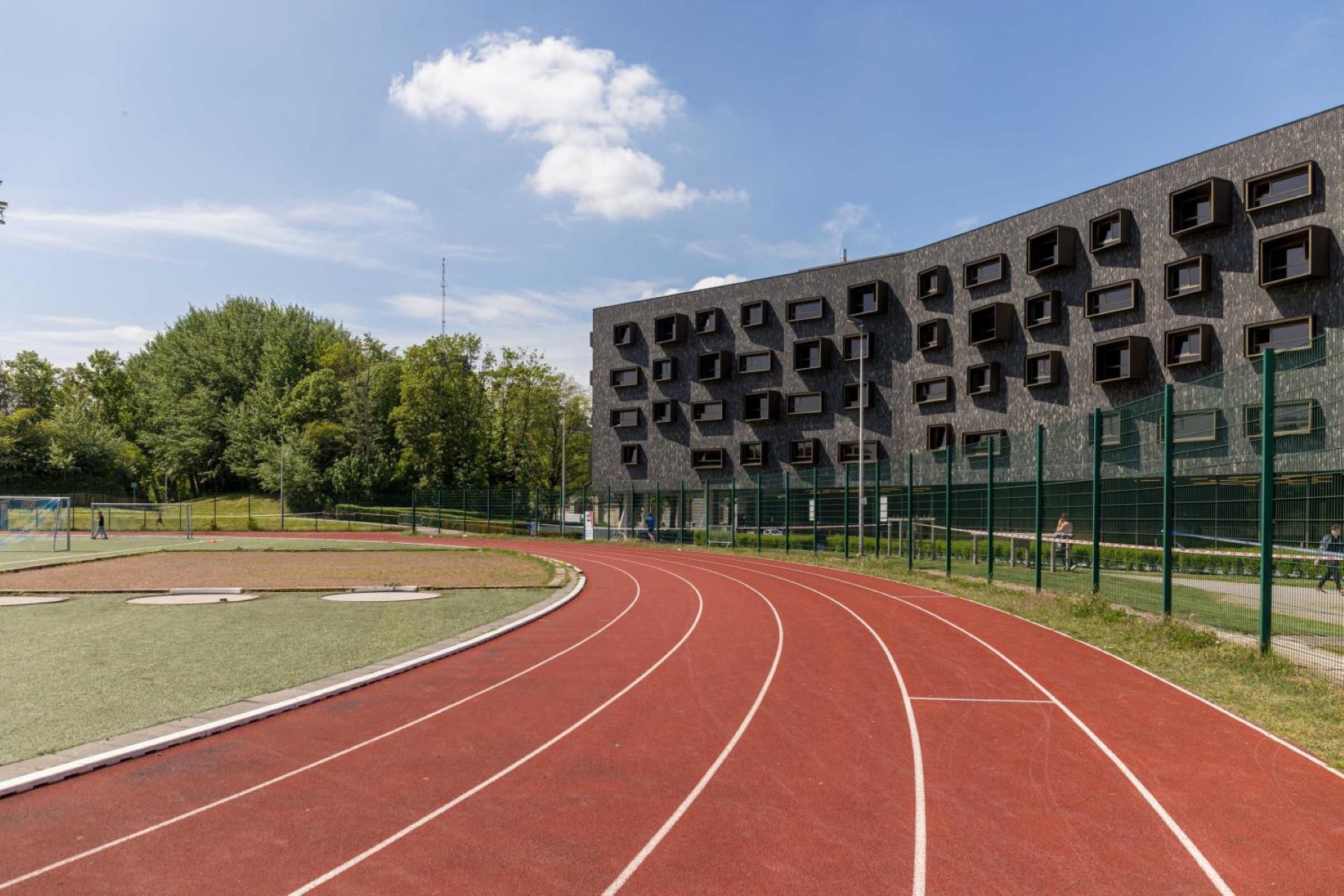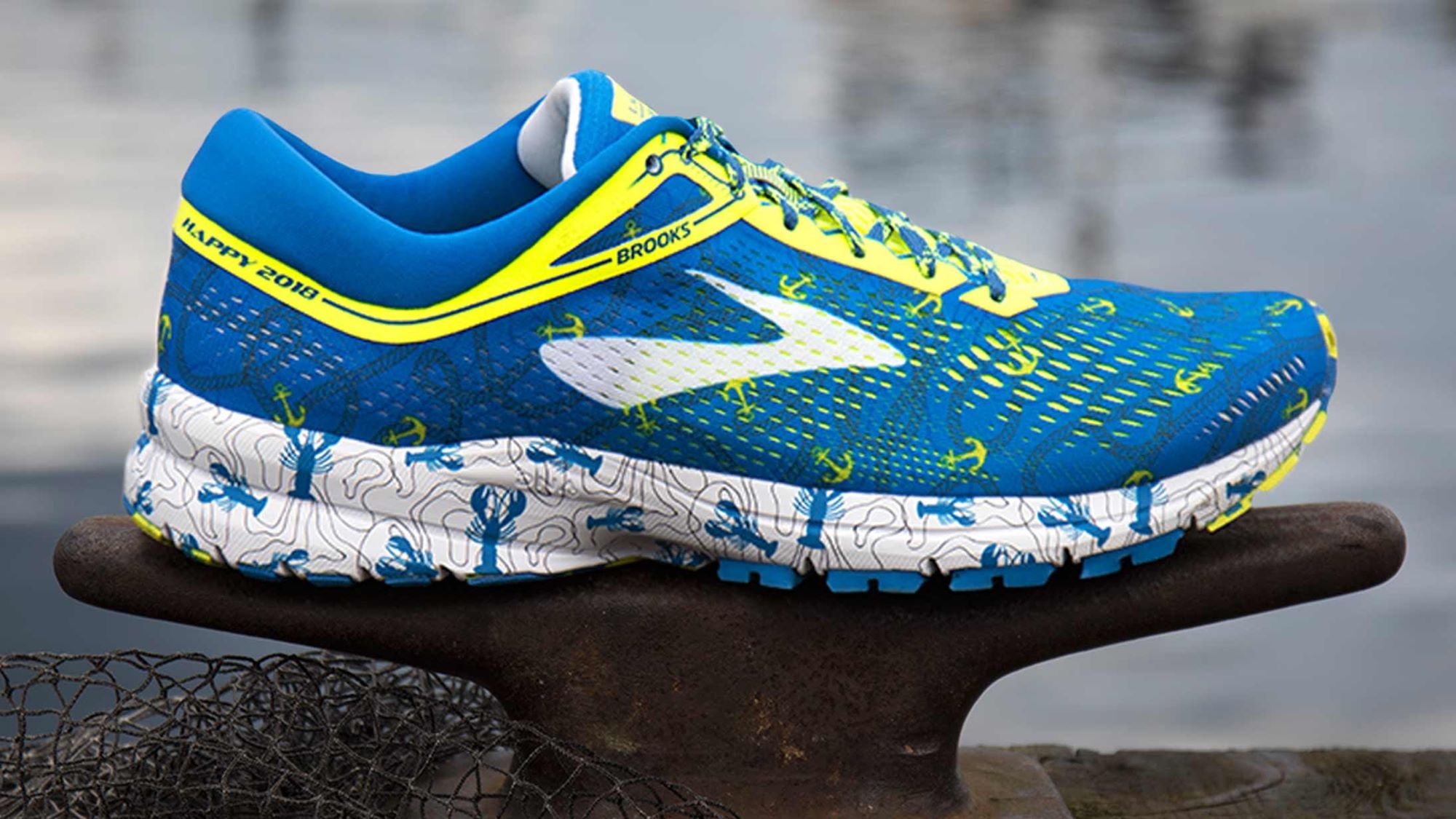

Featured
What Is A Sprint Spike
Modified: August 19, 2023
Discover the benefits of using featured sprint spikes in track and field events. Enhance your performance with these specialized shoes engineered for speed and agility.
Introduction
When it comes to the world of sprinting, every second counts. Athletes strive to enhance their performance in any way possible, and one essential tool in their arsenal is the sprint spike. These specialized athletic shoes are designed to provide maximum speed and traction for sprinters during competitions and training sessions.
A sprint spike is not your average running shoe. It is meticulously engineered to offer the perfect balance of support, flexibility, and grip. Whether it’s a 100-meter dash or a relay race, employing the right sprint spike can give athletes the competitive edge they need to achieve their best results.
While sprint spikes are primarily used in track and field events, they have also gained popularity among other athletes requiring explosive speed, such as football players and baseball runners. With their lightweight profile and enhanced traction, sprint spikes have become an integral part of the athletic gear lineup for many sports.
In this article, we will delve into the world of sprint spikes to understand their components, benefits, and how to effectively use them to boost speed and performance.
So, if you’re curious about what sets sprint spikes apart from regular running shoes and how they can make a remarkable difference for sprinters, read on to explore the intricacies of these specialized athletic shoes.
Definition of a Sprint Spike
A sprint spike, also known as a track spike or simply a spike, is a type of athletic shoe designed specifically for sprinters and other high-speed athletes. These shoes are engineered to optimize performance by providing maximum traction, support, and stability during sprinting events.
What sets sprint spikes apart from regular running shoes is the presence of spike plates or metal or ceramic spikes on the outsole. These spikes penetrate the track surface and enhance traction, helping athletes propel themselves forward quickly and efficiently.
Sprint spikes are characterized by their lightweight construction, minimal cushioning, and a snug fit that allows for a direct connection between the foot and the track. The reduced weight of the shoe reduces drag and allows sprinters to generate more power during each stride.
Additionally, sprint spikes have a lower heel drop, meaning the difference in height between the heel and forefront of the shoe is minimal. This promotes a more biomechanically efficient running form, enabling athletes to achieve faster times.
It’s important to note that although sprint spikes excel in providing speed and traction, they are not designed for long-distance running or everyday use. Due to their minimal cushioning and aggressive traction, sprint spikes may be uncomfortable and potentially harmful if used for extended periods or on hard surfaces.
Sprint spikes come in various models, each designed for different types of sprinting events. For example, there are spikes specifically designed for the 100-meter dash, 200-meter dash, and other distances. The spike plates can also vary in length and configuration to suit different track surfaces and athlete preferences.
Now that we have a better understanding of what sprint spikes are and their main design features, let’s explore the individual components that make these shoes so effective for sprinters.
Components of a Sprint Spike
A sprint spike is a complex piece of athletic footwear that combines several key components to optimize performance and traction. Understanding the different parts of a sprint spike can help athletes choose the right shoes based on their specific needs and preferences.
Upper Material: The upper material of a sprint spike is typically lightweight and breathable, allowing for optimal airflow to keep the feet cool during intense sprints. It is often made of synthetic materials such as mesh or ultralight synthetic fibers, which provide a snug fit and minimize excess weight.
Midsole: Unlike regular running shoes, sprint spikes have a minimalistic midsole. The midsole provides a small amount of cushioning to protect the foot while still maintaining a close connection to the track, allowing athletes to feel the ground and generate power with each stride.
Outsole: The outsole of a sprint spike is where the rubber meets the road, or rather, the track. It is typically made of a durable rubber compound that offers excellent traction and grip. The design of the outsole can vary depending on the event and track surface, with different patterns and configurations to optimize performance.
Spike Plate: One of the defining features of a sprint spike is the spike plate. This is a rigid plate located on the outsole that houses the metal or ceramic spikes. The spike plate provides stability and rigidity, allowing the spikes to penetrate the track surface and provide the necessary grip for explosive acceleration.
Closure System: The closure system of a sprint spike is essential for securing the shoe snugly to the foot. It typically consists of laces or straps that provide a customizable fit, ensuring minimal movement inside the shoe during sprints. A secure closure system prevents any discomfort or blisters that may occur due to excessive foot slippage.
By understanding the various components of a sprint spike, athletes can make informed decisions regarding the features they prioritize, such as lightweight construction, optimal traction, or a specific spike plate configuration. This knowledge can help them find the perfect pair of sprint spikes to enhance their performance on the track.
Upper Material
The upper material of a sprint spike is a critical component that plays a crucial role in providing comfort, support, and breathability. It is designed to wrap around the athlete’s foot snugly while offering flexibility and lightweight performance.
In order to achieve these qualities, sprint spikes feature upper materials made from synthetic materials such as mesh or ultralight synthetic fibers. These materials are chosen for their ability to create a close, second-skin fit without adding unnecessary weight.
Mesh is a popular choice for the upper material due to its excellent breathability. The porous texture allows air to circulate, keeping the foot cool and preventing excessive sweating during intense sprints. This helps to maintain a comfortable environment inside the shoe, reducing the risk of blisters and discomfort.
Ultralight synthetic fibers, on the other hand, offer durability and flexibility. These materials are engineered to be thin and pliable while still providing sufficient support for the foot. The lightweight nature of these fibers minimizes the overall weight of the sprint spike, reducing drag and allowing the athlete to generate more power with each stride.
The upper of a sprint spike is typically designed to provide a snug, sock-like fit. This ensures that the foot remains securely in place, minimizing any unnecessary movement that could hinder performance or cause discomfort. Athletes need a shoe that feels like an extension of their foot, allowing them to focus solely on their sprinting technique.
Additionally, the upper materials of sprint spikes are often designed with reinforced panels or overlays strategically placed in high-stress areas. These reinforcements provide additional support and stability, ensuring that the shoe retains its shape during rapid movements and reducing the risk of injury.
It is important for athletes to choose sprint spikes with an upper material that suits their specific needs and preferences. Some may prioritize breathability for hot and humid climates, while others may require extra support in specific areas of the foot. Proper fitting and comfort are key factors in selecting the right sprint spike for optimal performance.
By utilizing advanced synthetic materials and incorporating design features that prioritize comfort and performance, sprint spike manufacturers are continually pushing the boundaries of innovation to give athletes the edge they need to excel in their sprinting endeavors.
Midsole
The midsole is a crucial component of a sprint spike that provides cushioning, responsiveness, and support to the foot during high-speed sprints. While sprint spikes have a minimalistic midsole compared to regular running shoes, it still plays an essential role in optimizing performance.
The primary purpose of the midsole in a sprint spike is to protect the foot from the impact of each stride while maintaining a close connection to the track. This cushioning helps absorb the shock of landing and aids in reducing the risk of injuries such as stress fractures or joint discomfort.
Unlike the thick and heavily cushioned midsoles of running shoes designed for longer distances, the midsole in sprint spikes is relatively thin and firm. This design allows for a more direct transfer of power from the foot to the track, enabling athletes to generate maximum propulsion with every stride.
The composition of the midsole may vary depending on the brand and model of the sprint spike. It is often made of lightweight materials such as compressed foam or EVA (ethyl vinyl acetate) foam. These materials provide a balance between cushioning and responsiveness, ensuring that athletes can feel the ground and maintain proper biomechanical optimization.
In addition to cushioning, the midsole also contributes to the stability and support of the foot. It helps prevent excessive pronation or supination, ensuring that the foot strikes the ground in a neutral position. This aids in maintaining proper alignment, which can improve efficiency and reduce the risk of injury.
Sprint spikes are designed to be responsive, allowing for quick and explosive movements. The minimalistic midsole enhances the feedback between the foot and the track, enabling athletes to make split-second adjustments and maximize their sprinting potential.
When selecting sprint spikes, it is crucial for athletes to consider the level of cushioning in the midsole that best suits their needs. Factors such as personal preference, running style, and track conditions can all influence the desired level of cushioning in the midsole of a sprint spike.
By incorporating a minimalistic yet supportive midsole, sprint spikes provide the necessary balance of cushioning and responsiveness for sprinters to achieve their peak performance on the track.
Outsole
The outsole of a sprint spike is a critical component that directly interacts with the track surface, providing traction, grip, and durability. It plays a key role in optimizing performance and ensuring that sprinters can maintain their maximum speed and control during high-speed sprints.
Sprint spike outsoles are typically made of a durable rubber compound that is resistant to wear and tear. This rubber material offers excellent grip on both synthetic and natural track surfaces, allowing athletes to generate maximum power with each stride.
The design of the outsole is carefully engineered to enhance traction and reduce the risk of slippage. It often features a combination of strategically placed patterns, grooves, and lugs to provide optimal grip and stability. These patterns help athletes maintain their balance and prevent any loss of traction, allowing them to maintain their top speed throughout the race.
The patterns on the outsole can vary depending on the specific track surface and the type of sprint spike. For example, sprint spikes designed for rubberized tracks may have a different pattern than those intended for grass or dirt surfaces.
In addition to the pattern, the shape and flexibility of the outsole also play a role in optimizing performance. The outsole is designed to be lightweight and minimalistic, allowing for natural foot movement and a more efficient transfer of power from the foot to the track.
Furthermore, the outsole of a sprint spike is designed to be thin and close to the ground, reducing the distance between the athlete’s foot and the track. This low-profile design promotes a better connection between the athlete’s foot and the running surface, enhancing the overall responsiveness and propulsion during each stride.
It is important for sprinters to select sprint spikes with outsoles that suit their track environment and running style. Choosing the right outsole design ensures that athletes have the necessary traction and grip to achieve their top performance without any compromise.
The outsole of a sprint spike is a vital component that directly impacts an athlete’s ability to maintain speed, stability, and control during high-speed sprints. Its careful design and construction contribute to the overall performance and success of sprinters on the track.
Spike Plate
The spike plate is a defining feature of a sprint spike and is responsible for providing the necessary traction and grip on the track surface. It is a rigid plate located on the outsole of the shoe that contains metal or ceramic spikes. The spike plate plays a crucial role in optimizing performance for sprinters.
The spike plate is typically made of a lightweight and durable material, such as nylon or thermoplastic polymer. This material provides stability and rigidity to ensure that the spikes maintain their position and penetrate the track surface effectively.
The spike plate is designed with strategically placed receptacles or slots that hold the spikes securely in place. These receptacles allow for easy insertion and removal of the spikes while ensuring a secure fit during sprints.
The length and configuration of the spikes can vary depending on the event and track surface. Sprint spikes designed for shorter distances, such as the 100-meter dash, often feature shorter spikes for improved traction during explosive acceleration. Spikes for longer distances, like the 400-meter dash, may be slightly longer to accommodate the different demands of the event.
In addition to length, the shape and pattern of the spike plate also play a crucial role in traction. The spike plate is designed to distribute pressure evenly across the spikes, preventing any uneven wear and providing optimal grip on the track surface.
Sprint spikes allow for customization of the spike plate depending on the athlete’s preference and competition requirements. Athletes can choose different spike lengths, configurations, and materials to suit their individual running style and track conditions.
It is important for athletes to experiment and find the right spike plate configuration that suits their needs. Testing different spike types and lengths during training sessions can help determine the optimal setup before important competitions.
Overall, the spike plate in sprint spikes is a key factor in enhancing traction, grip, and speed. Its thoughtful design and customization options ensure that athletes can maximize their performance and achieve their best results on the track.
Closure System
The closure system of a sprint spike is an essential component that ensures a secure and customized fit for optimal performance. It is designed to keep the shoe firmly in place on the foot, minimizing any unwanted movement during sprints and ensuring a comfortable and supportive fit.
The closure system in sprint spikes typically consists of laces or straps. These elements allow athletes to adjust and tighten the shoe to their desired level of comfort and support. The closure system is crucial for preventing slippage and reducing the risk of blisters or discomfort during high-speed sprints.
Laces are the most common type of closure system used in sprint spikes. Athletes can adjust the tightness of the laces to secure the shoe around the foot, ensuring a snug fit. It is important to lace the shoe properly, ensuring that there is enough tension to keep the foot secure without restricting circulation or causing discomfort.
An alternative to laces is a strap-based closure system. These straps can be found on the upper part of the shoe or around the ankle area. They provide additional support and stability, allowing for a secure fit and reducing any foot movement inside the shoe.
The closure system in sprint spikes should be easy to adjust quickly, as athletes may need to make on-the-spot modifications during competitions or training. The ability to fine-tune the fit allows athletes to achieve the optimal level of snugness, maximizing performance and minimizing the risk of injury.
It is essential for athletes to ensure that the closure system is not too tight, as this can restrict blood flow and cause discomfort. Conversely, an overly loose closure system may result in the foot sliding around inside the shoe, affecting stability and impeding performance.
Properly utilizing the closure system can significantly reduce the chance of slippage, maintain a secure fit, and enhance the overall performance of sprinters. Athletes should experiment with different lacing techniques or strap adjustments to find the most comfortable and supportive fit for their feet.
Selecting sprint spikes with a suitable closure system that meets individual preferences and requirements is crucial for athletes to perform at their best and achieve their sprinting goals.
Benefits of Using Sprint Spikes
Using sprint spikes can provide significant advantages for sprinters, enhancing performance and improving overall results. These specialized athletic shoes offer several key benefits that give athletes the competitive edge they need on the track.
1. Enhanced Traction: The spike plate and outsole design of sprint spikes provide exceptional traction on both synthetic and natural track surfaces. This improved grip allows athletes to push off the ground with more force, facilitating explosive acceleration and maintaining speed throughout the race.
2. Lightweight Construction: Sprint spikes are designed to be lightweight, minimizing unnecessary bulk and reducing drag. This lightweight construction helps athletes conserve energy and optimize their running economy, allowing for faster times and increased performance.
3. Direct Energy Transfer: The minimalistic midsole and low-profile design of sprint spikes facilitate a more direct transfer of power from the foot to the track. This enhanced energy transfer enables athletes to generate maximum propulsion with each stride, resulting in faster sprint times.
4. Improved Running Form: The close fit and supportive features of sprint spikes promote proper running mechanics. The snug upper wraps around the foot, minimizing foot movement inside the shoe and allowing for a more efficient and stable stride. This can lead to improved running form and reduced risk of injury.
5. Customizable Spike Configuration: Sprint spikes offer the flexibility to customize the spike configuration based on individual preferences and track conditions. Athletes can choose the length and type of spikes to optimize traction and adapt to different surfaces, ensuring the best possible performance.
6. Psychological Advantage: Wearing sprint spikes can have a psychological impact on an athlete’s mentality and confidence. The specialized design and association with high-performance athletics can provide a boost in motivation, focus, and self-belief, leading to improved overall performance.
7. Specialized Performance for Sprinting: Unlike regular running shoes, sprint spikes are specifically designed to cater to the unique demands of sprinting events. From the lightweight construction to the spike plate and outsole design, every aspect of the sprint spike is carefully engineered to maximize speed, acceleration, and overall sprinting performance.
It is important for athletes to recognize and take advantage of the benefits that sprint spikes provide. By wearing these specialized athletic shoes, sprinters can optimize their performance, achieve faster times, and gain a competitive edge over their opponents.
Training and Usage Tips
To fully capitalize on the benefits of using sprint spikes and maximize performance, sprinters should consider the following training and usage tips:
1. Gradual Transition: If you are new to sprint spikes, allow your feet and legs to gradually adjust to the different feel and support of the shoes. Begin by incorporating them into shorter training sessions before using them for high-intensity workouts or competitions.
2. Proper Warm-up: Prior to each sprint session or race, thoroughly warm up your muscles and joints to reduce the risk of injury. Perform dynamic stretches, light running drills, and strides to prepare your body for the demands of sprinting.
3. Practice Proper Technique: Sprint spikes have a minimalistic design that encourages a more efficient running form. Focus on maintaining a tall posture, driving your knees forward, and landing on the balls of your feet to optimize speed and reduce ground contact time.
4. Track Surface Consideration: Different track surfaces may require adjustments to your spike configuration. Adjust the length and type of spikes based on the track surface, ensuring optimal traction and preventing excessive slipping or digging into the track.
5. Regular Cleaning and Maintenance: Keep your sprint spikes clean and free from debris, especially in the spike receptacles. Regularly inspect and replace worn-down spikes to maintain optimal traction and prevent any potential damage to the spike plate.
6. Selecting Appropriate Events: Different sprint spikes may be better suited for specific events. Consider the distance and type of sprinting you primarily engage in when selecting sprint spikes to ensure they are tailored to your specific needs and maximize your performance in your chosen events.
7. Rotate Between Shoes: To prolong the lifespan of your sprint spikes and prevent excessive wear, consider rotating between multiple pairs of sprint spikes during training and competition. This allows the shoes to rest and recover, prolonging their durability.
8. Seek Professional Guidance: If you are serious about improving your sprinting performance, consider seeking guidance from a professional coach or trainer. They can provide personalized advice on sprinting techniques, spike selection, and training programs tailored to your specific goals and abilities.
By incorporating these training and usage tips into your sprinting routine, you can optimize the benefits of sprint spikes and ensure that you perform at your best during training sessions and on the big stage of competition.
Conclusion
Sprint spikes are more than just a specialized piece of athletic footwear. They are an essential tool that can significantly enhance a sprinter’s performance, providing the traction, support, and speed necessary for optimal results on the track.
The components of a sprint spike, including the upper material, midsole, outsole, spike plate, and closure system, all work together to maximize performance and minimize any limitations. The lightweight construction, enhanced traction, and specialized design of sprint spikes contribute to improved running form, increased speed, and reduced risk of injury.
By utilizing sprint spikes, athletes can experience several benefits, including enhanced traction, lightweight construction, direct energy transfer, improved running form, customizable spike configuration, psychological advantage, and specialized performance for sprinting. These advantages allow sprinters to optimize their performance, achieve faster times, and gain a competitive edge in their races.
Furthermore, training and usage tips such as gradual transition, proper warm-up, practicing proper technique, considering the track surface, regular maintenance, selecting appropriate events, and seeking professional guidance can further enhance the effectiveness and longevity of sprint spikes.
Whether you’re a dedicated sprinter aiming for the podium or an athlete seeking explosive speed in your chosen sport, sprint spikes can make a remarkable difference in your performance. The right pair of sprint spikes can provide the necessary tools to reach your full potential and achieve your sprinting goals.
So, lace up a pair of sprint spikes, hit the track, and experience the exhilaration of sprinting with enhanced speed, traction, and confidence. Unlock your true sprinting potential with sprint spikes as your trusted ally in the journey towards athletic greatness.









